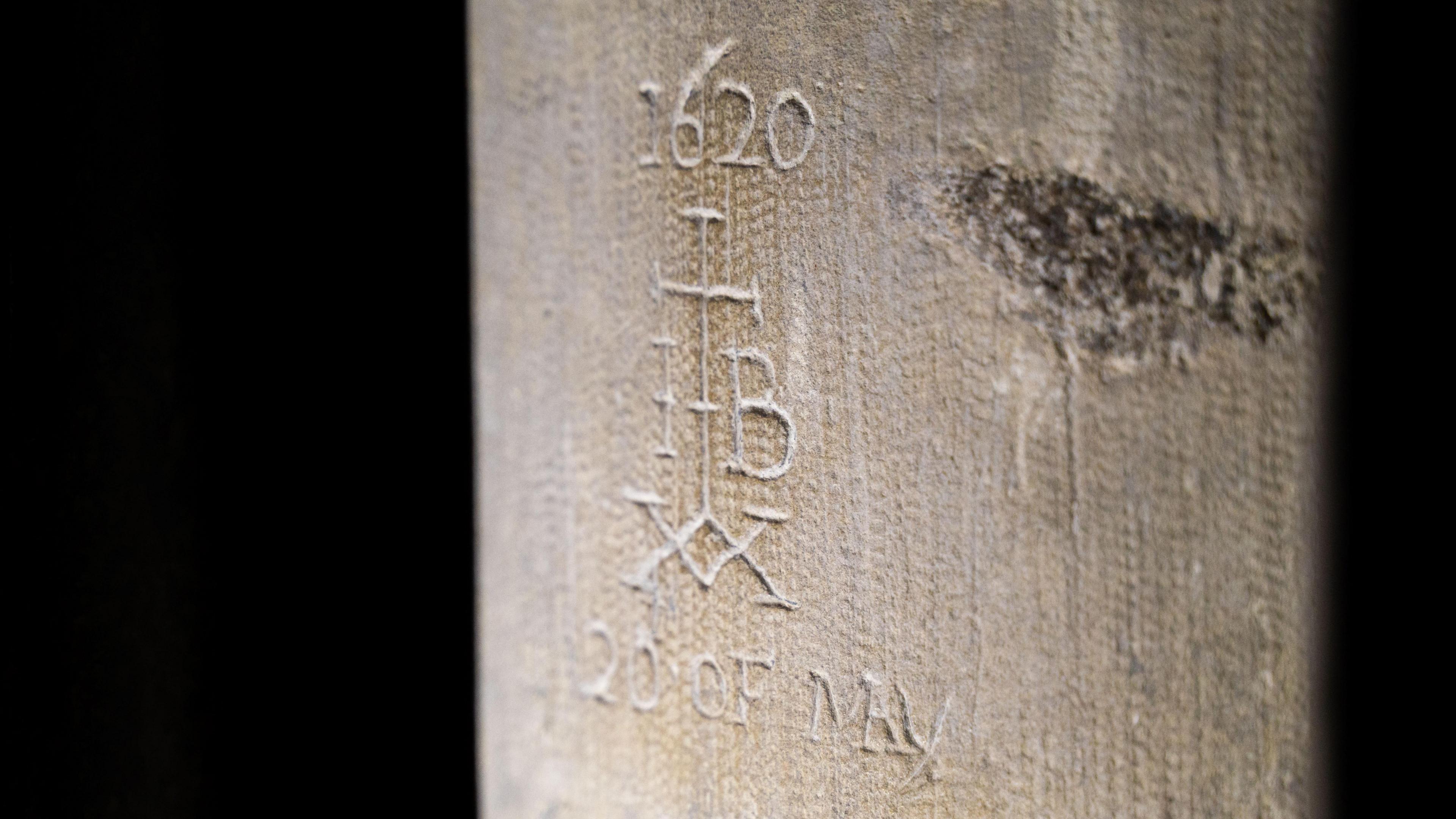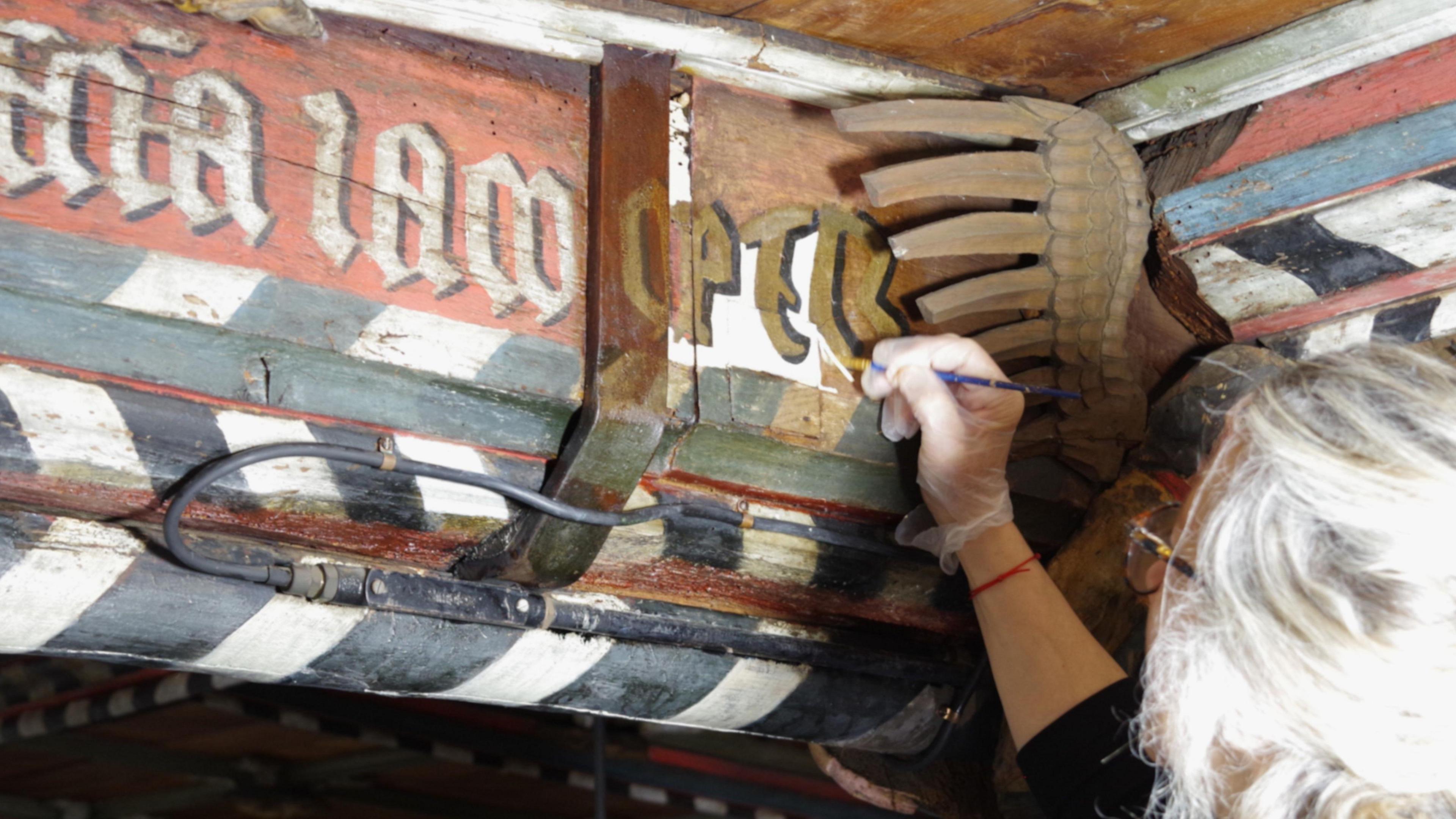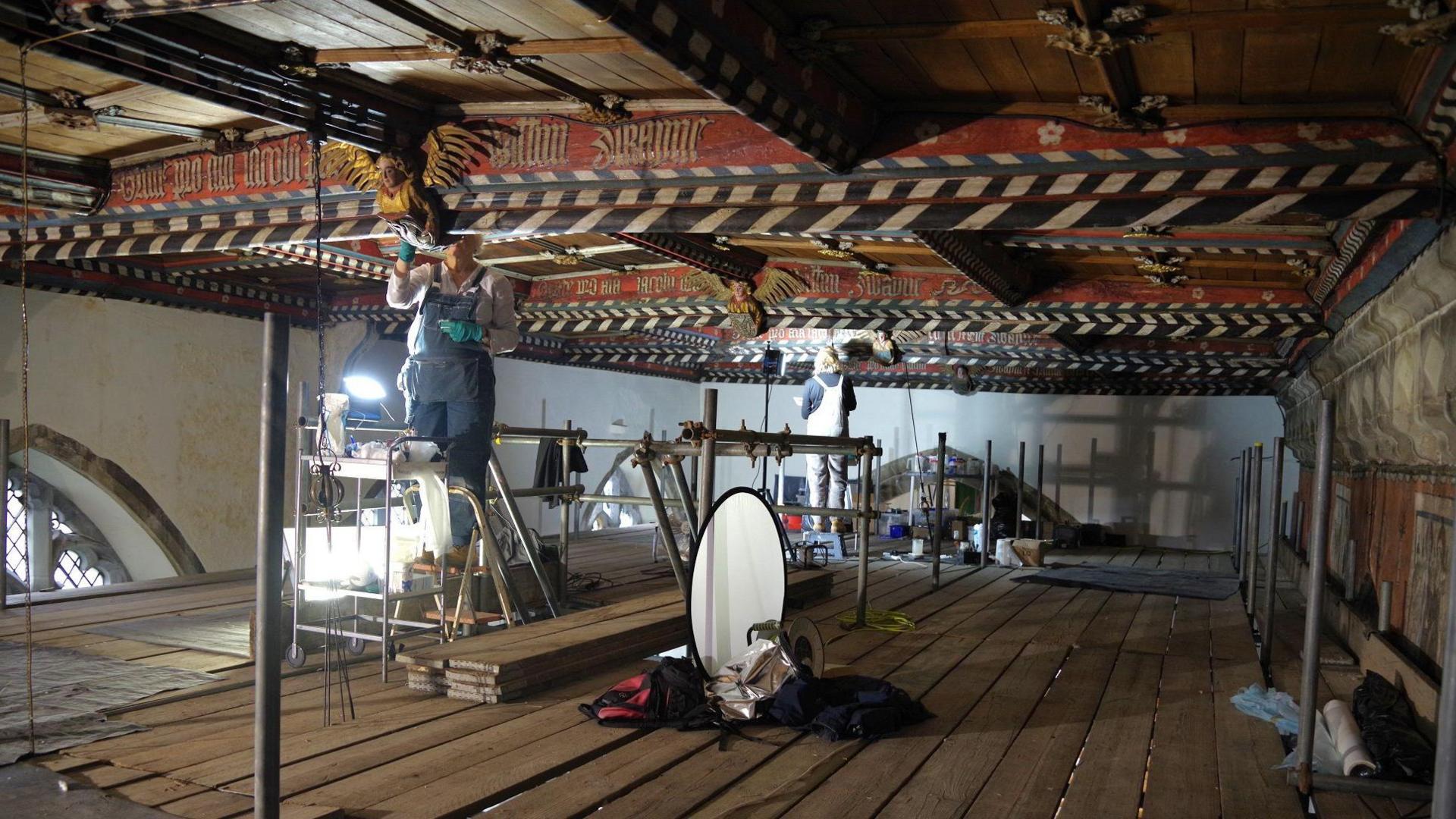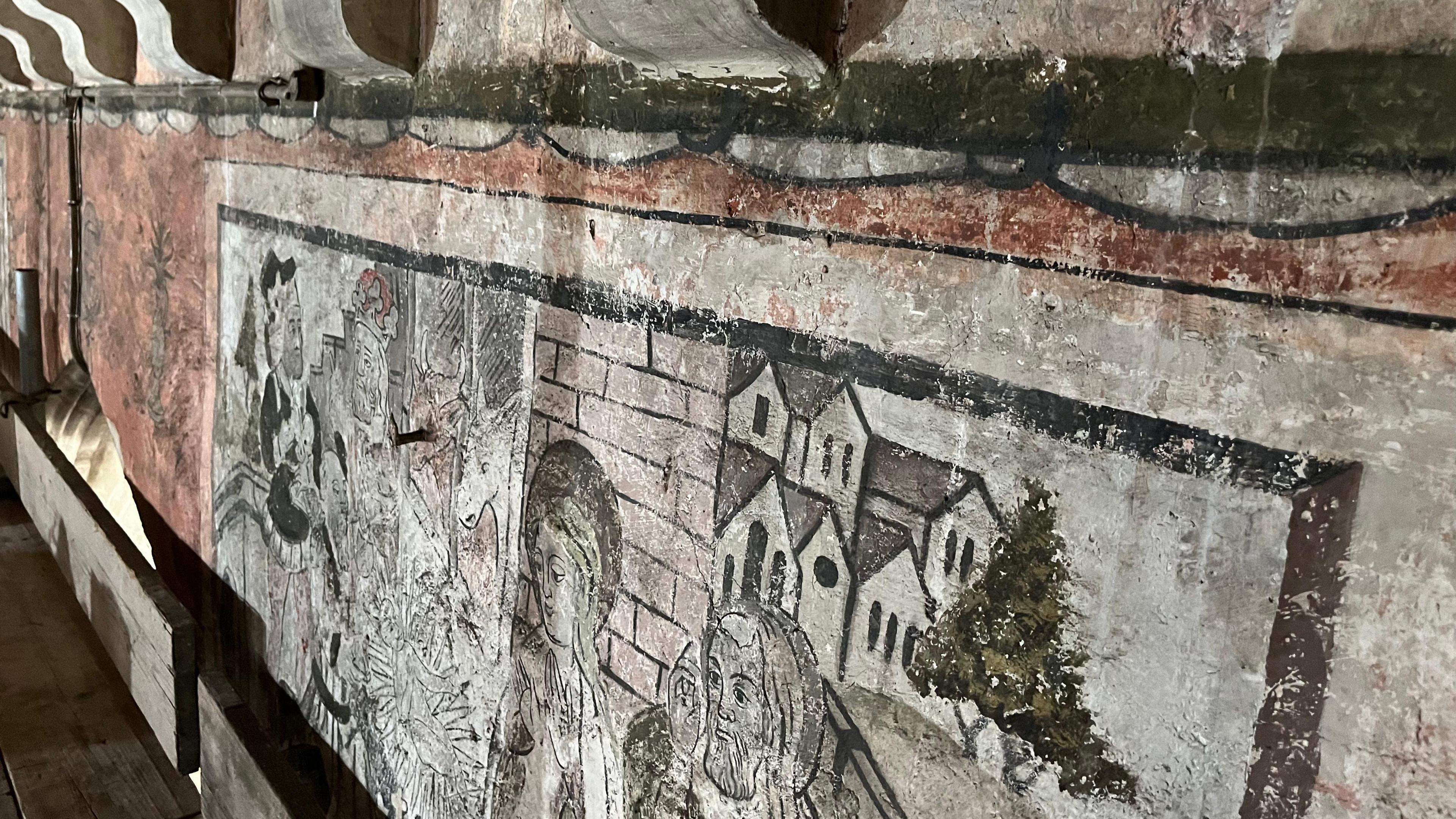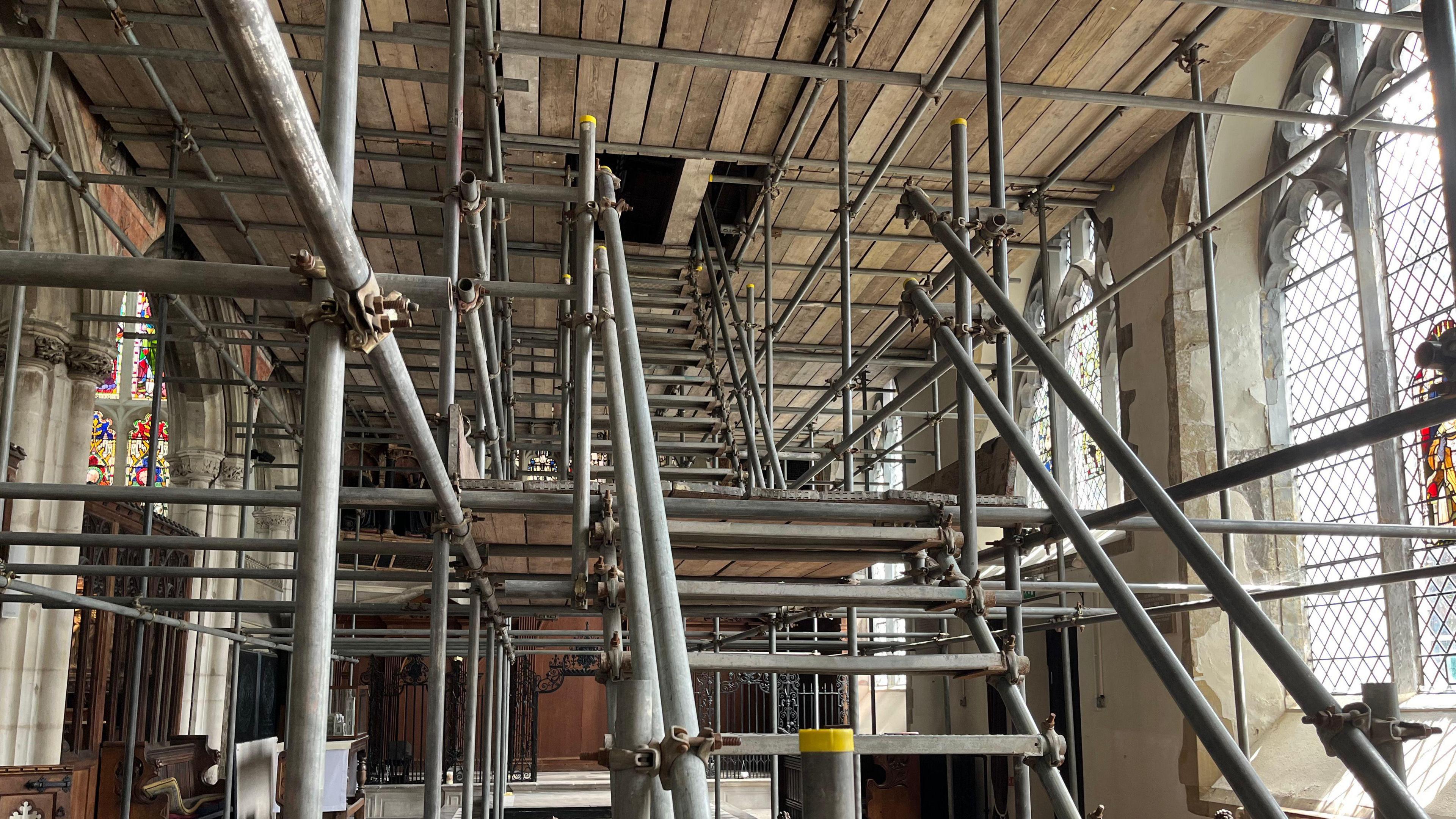Church clean unveils medieval craftmanship
- Image source, St Thomas's Church, Salisbury
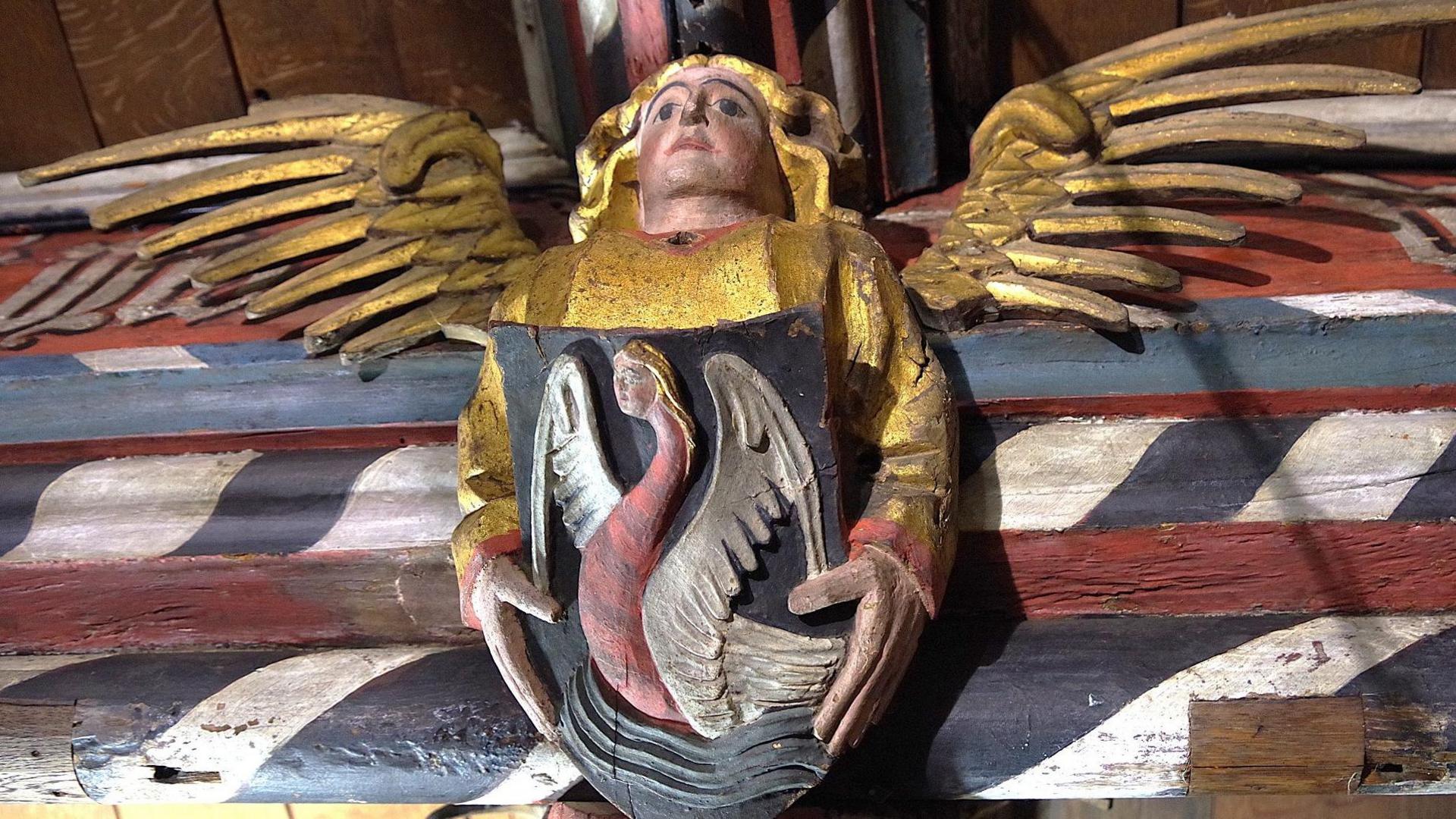
Image caption, There are 238 wooden angels in the church - all uniquely decorated - and now some have been properly cleaned
1 of 5
- Published
Specialist cleaning has revealed more of what a church looked like over 500 years ago as it highlighted the work of medieval craftsmen on part of its ceiling.
St Thomas's Church, in the centre of Salisbury, is already well-known for its huge and rare 'Doom painting' which depicts judgement day, but there are other paintings up high too, including 238 unique carved angels.
With the church in the centre of the city, it is hoped that slowly uncovering more of the medieval decoration will bring in visitors.
Peter Heier, who is part of the group working to get parts of the building restored, said they want to try and uncover how it was in the 15th Century.
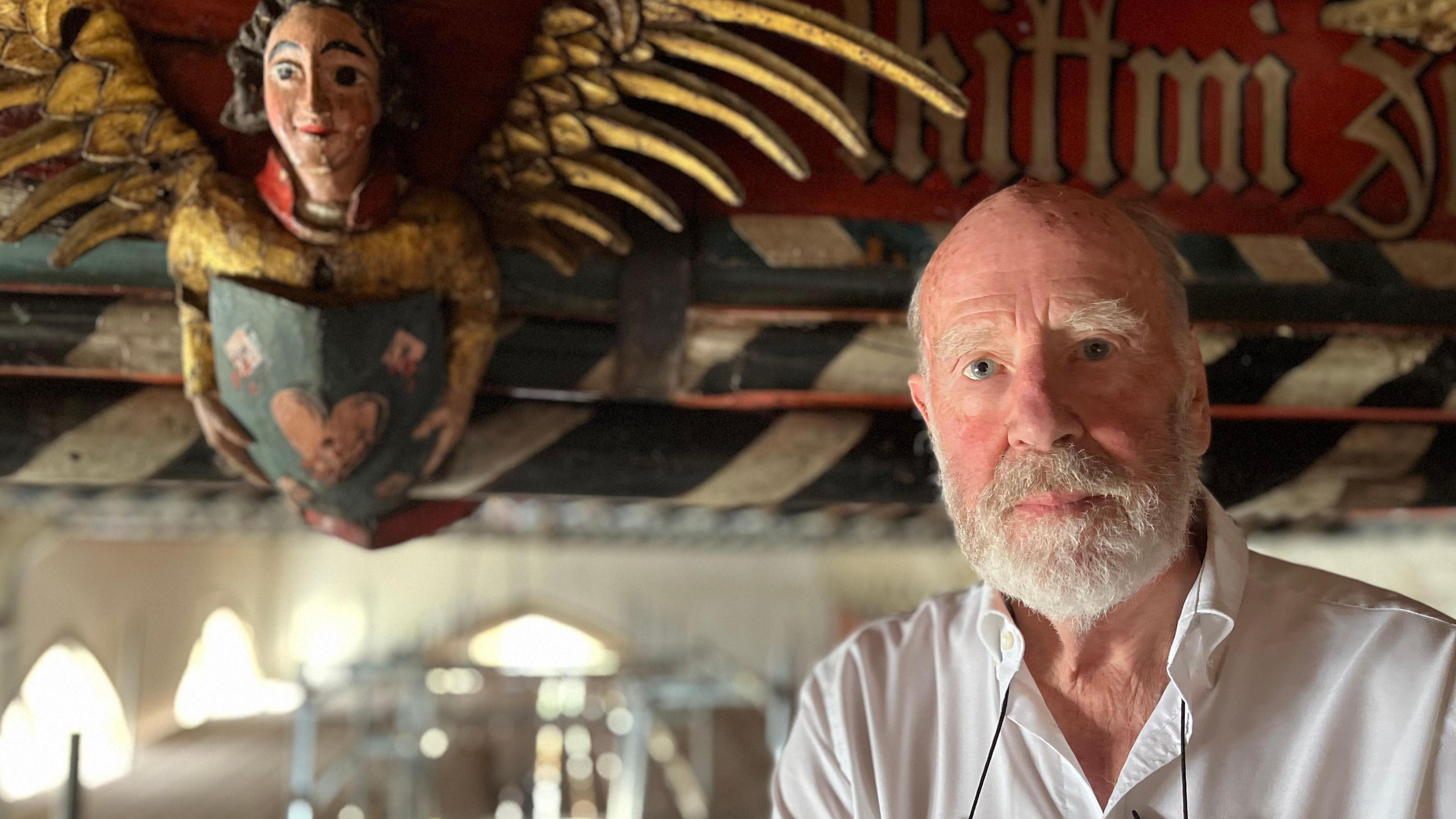
Peter Heier is part of the church group working on the project
Mr Heier said: "Gradually we will hopefully clean the rest of the ceilings in the church.
"I think it brings visitors in. It's on the Southampton, Winchester, Salisbury, Stonehenge route.
"Although it's hidden, it's right in the middle of the city, so it's easy for people to see."
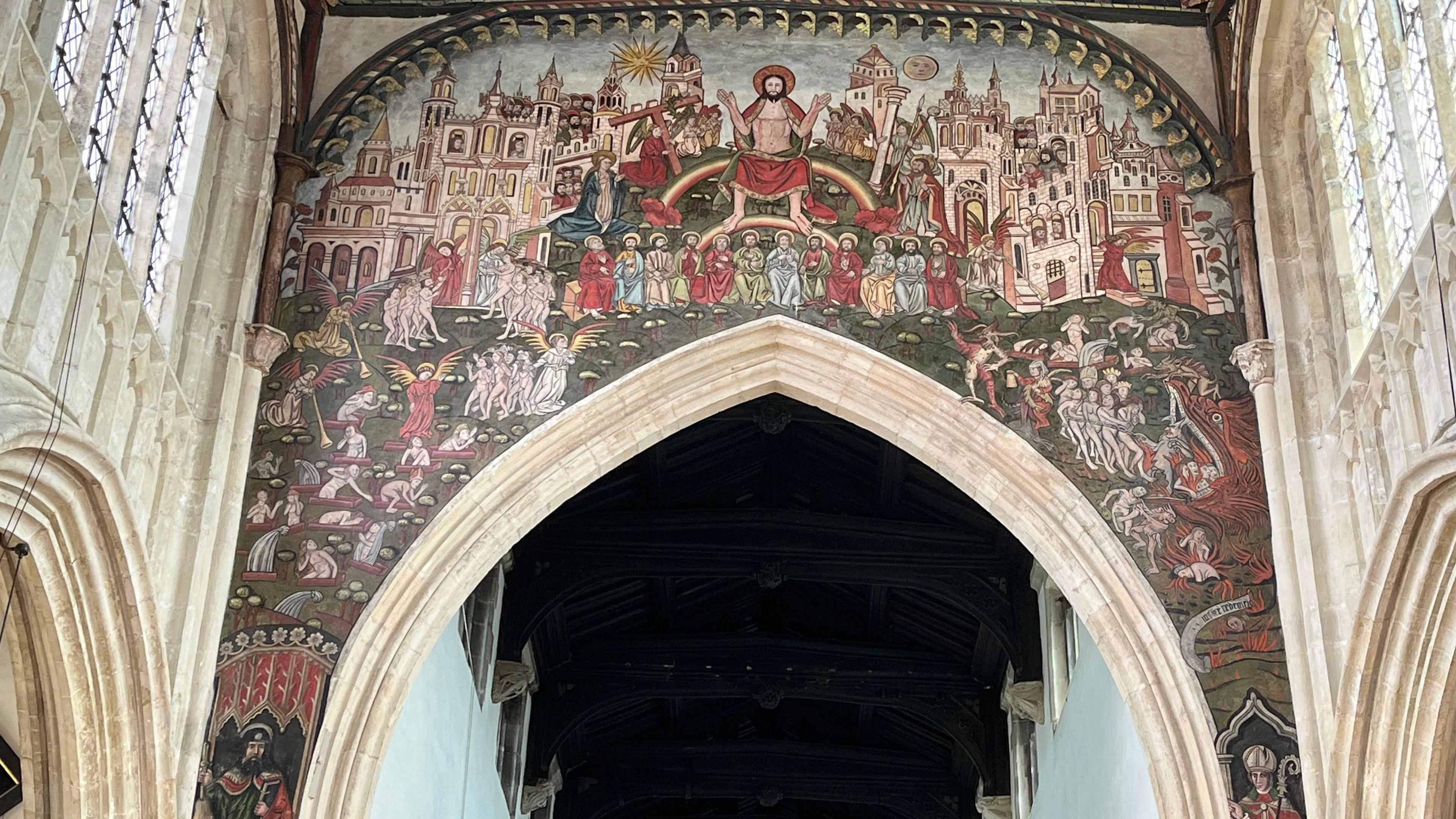
The church is well-known for the huge Doom painting, which can be seen the moment people walk in
The ceiling that has been restored is in the area of a church called the Lady Chapel, first paid for in the 1400s by William Swain, a prominent name in the city.
His name and those of other family members appear in vivid gold inscriptions on the large beams.
Ruth McNeilage runs the conservation company working on the project and has been up high on the scaffolding.
She loves to see the original painting.
"You see the actual brush strokes. You see brush hairs. It's beautiful," she said.
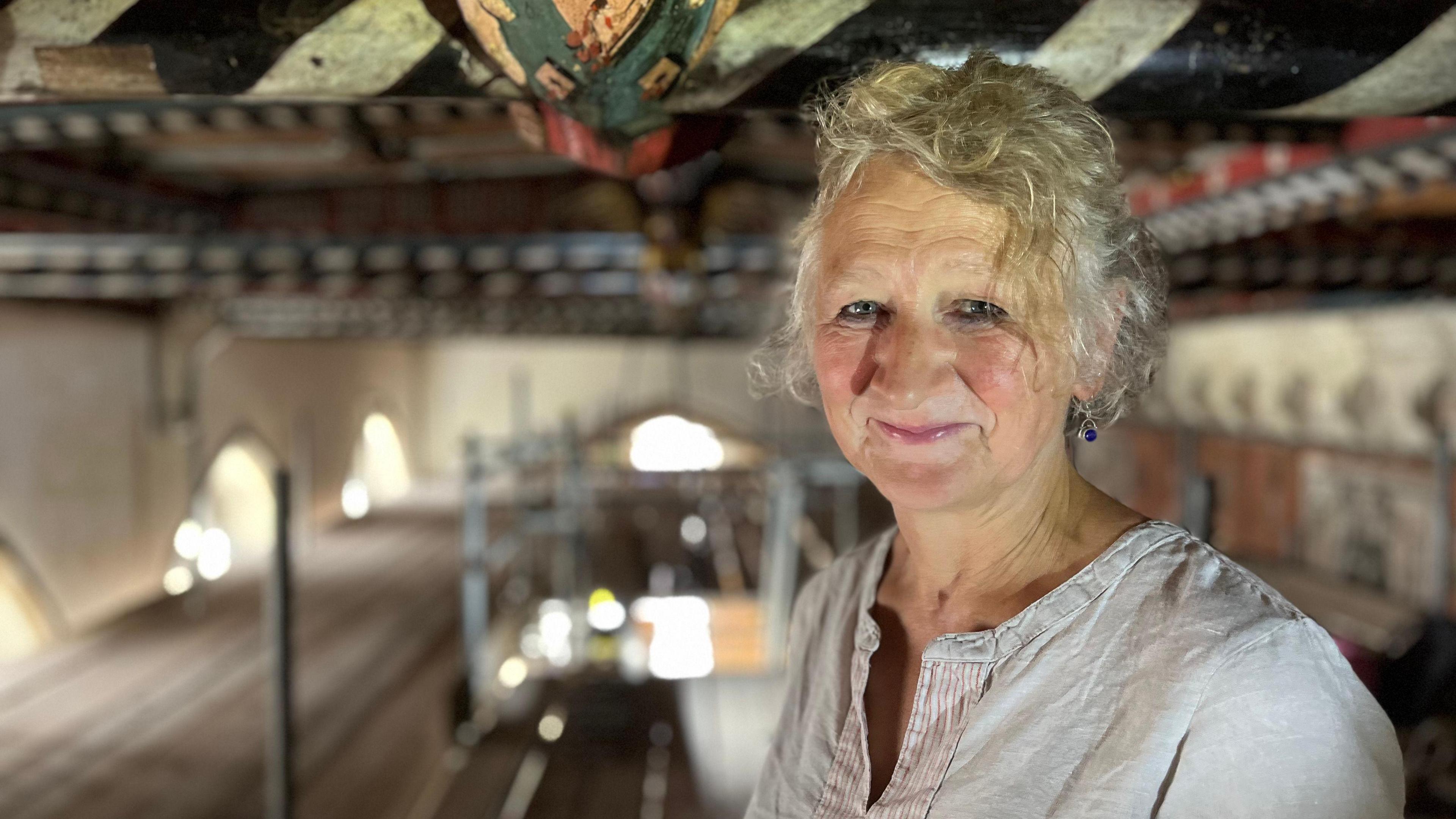
Ruth McNeilage, who runs the conservation company involved, said there were differences between the original work and later attempts at re-painting
Over the centuries, there have been attempts at re-painting.
Using a digital microscope and pigment analysis, Ms McNeilage and the team were able to uncover early decoration, including bright colours and floral designs.
"The original is actually far more free and graceful, like someone who was very used to wielding a paintbrush," she said.
"The 19th Century one is fine, but these are very much stencil flowers, very simplistic. Repeated. There's a difference to the style."
Mr Heier said the latest project cost about £60,000, but the church has received legacies recently and a grant from the William and Jane Morris Fund of the Society of Antiquaries towards it.
Get in touch
Tell us which stories we should cover in Wiltshire
Follow BBC Wiltshire on Facebook, external, X, external and Instagram, external. Send your story ideas to us on email or via WhatsApp on 0800 313 4630.
More stories like this
- Published4 December 2024
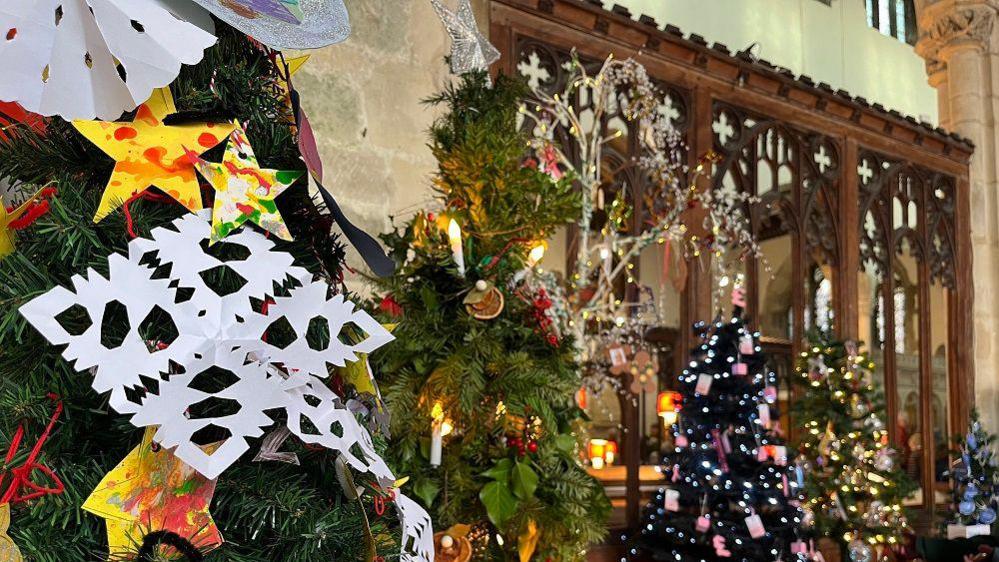
- Published9 May
